When it comes to nutritious food, you can't beat seasonal produce. Every month of the year brings with it a new offering of nutrient-dense veggies and fruits, as well as meat and seafood. Find out what seasonal foods to cook with your Instant Pot in August to lock in the most flavor and nutrients.
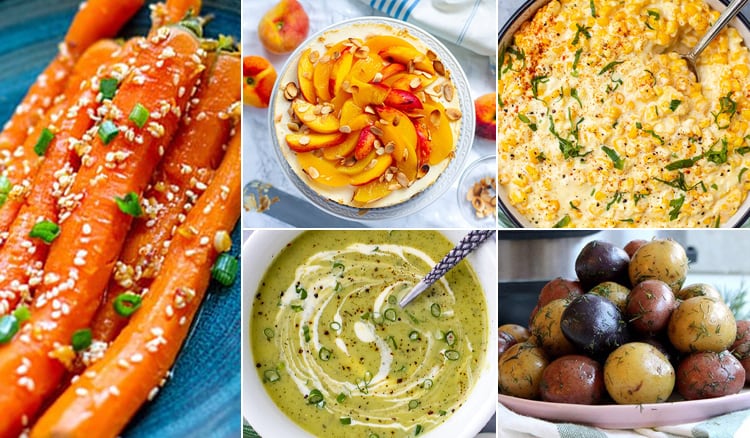
We're starting a new series of posts featuring seasonal recipes with your Instant Pot for each month of the year. We're covering the most common seasonal ingredients in the northern hemisphere and how they can be used in pressure cooking. Of course, not all seasonal foods are fit for this cooking method, so we're choosing those that are great to prepare with your Instant Pot pressure cooker.
What's In Season In August
Carrots
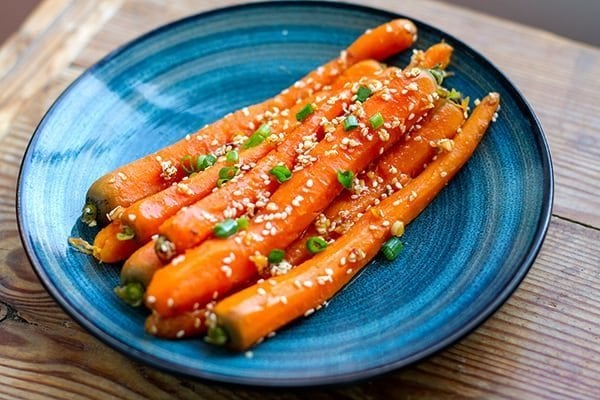
Carrots were grown in the Babylonian gardens in the 8th century, BCE for their leaves and seeds, both of which are highly aromatic, according to the Alan Davidson in the “Oxford Companion to Food”. It was only till later on that they were cultivated for their roots and they were yellow and purple-red. It wasn’t until the seventeenth century that the Dutch began growing an orange type.
Carrots today still vary in colors besides the commonly seen orange, you can find them in all shades of purple, red, white, yellow. They also vary in size, from tiny to giant. Smaller carrots tend to be sweeter and juicier.
The carrot roots should be firm and free of mushy or black/brown spots. They can keep in the fridge for at least a month. Which is great for planning out several meals with them as a main or sidekick ingredient.
Roasting carrots play up their natural sweetness. They are also wonderful to puree into a soup with ginger and turmeric or juiced with an apple for breakfast. Carrots can also be used for sweet recipes like the classic carrot cake.
They can be preserved in different ways such as pickled, canned and frozen. One cup of carrots provides over 400 per cent of your daily Vitamin A needs to help with vision, immune function, and reproduction. They are also good sources of potassium, vitamin K and vitamin E, and a great source of fibre.
Instant Pot Carrots With Honey Soy Glaze
Instant Pot Beef Pot Roast With Potatoes & Carrots
Carrot Lemongrass & Cilantro Soup (Vegan, Gluten-Free)
Instant Pot Carrot Cake (Step-By-Step Pics, Nut-Free)
Corn
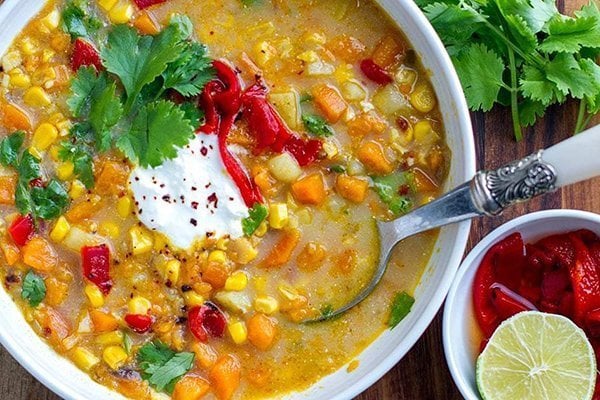
There is a lot of corn and several major types, including sweet corn (vegetable we eat), dent or “field” corn (animal feed and other industrial applications like ethanol), flour corn (used for cornmeal), and flint corn (known as Indian corn, often beautifully multicolored).
Sweet corn is available only in the summer and early fall. Because sweet corn is at its best when really, really fresh, try to seek out local corn from farmers markets or farm stands. The kernels do become starchier and less sweet the longer the ears are stored.
Look for ears that are firm, plump and fairly unblemished. Contrary to popular belief, you do not have to strip the ears of their green husk before purchasing them (and in fact, this drives farmers crazy). Just gently squeeze down the length of the ear to feel for bald spots.
Corn is amazingly versatile. The ears can be grilled, boiled, steamed or roasted; the kernels can be creamed, made into pancakes, turned into relish, added to salsa and even churned into ice cream. You can even eat fresh kernels raw right off the cob.
Cornmeal is used to make tortillas, tamales, cornbread, corn dumplings, and corn pudding, among many, many other dishes from around the world. Hominy is made from corn kernels soaked in lime and is available dried or canned.
Corn freezes well. Blanch the corn (easiest to do still on the cob) for 3-4 minutes in boiling water, and then quickly cool in an ice bath (ice plus water). Pat dry. Cut the kernels off the cob, place in freezer bags and freeze.
Fresh corn is a good source of Vitamin B6, thiamin, niacin, magnesium, iron and a number of other important minerals. Corn is also low in fat and high in dietary fiber and protein. Eating corn with beans provides all of the amino acids that humans need, as corn is high in methionine but lacking in lysine, while beans are high in lysine but lacking in methionine.
Instant Pot Corn Sweet Potato & Chipotle Soup
Instant Pot Corn On The Cob (With Cajun Butter & Lime)
Chicken & Corn Soup With Spinach
Yellow Rice With Peas & Corn
Creamed Corn
Eggplant
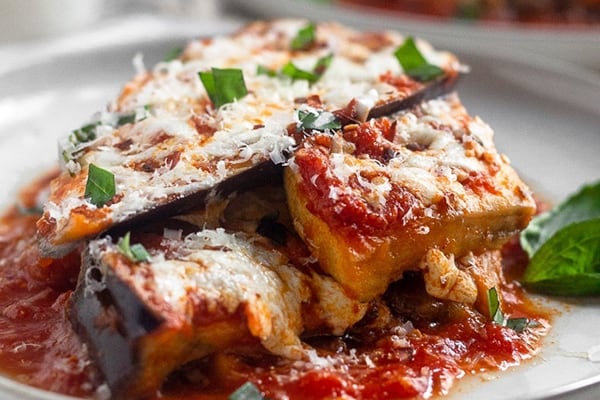
Eggplant is a deep purple meaty fruit ideal for grilling and roasting. Grown all over the world dictating a variety of shapes and sizes. Look for glossy, unblemished skin and very firm texture when (gently) squeezed when purchasing. Larger eggplant tends to be more bitter than smaller-sized ones. They don’t keep well in the refrigerator for longer than 2 to 4 days.
Usually, longer storage equals bitterness. So if you plan to cook your eggplant right away, leave it out on the counter. Eggplant oxidizes (turns brown when exposed to air) fairly quickly, so cut it right before you plan to cook it.
Salting eggplant keeps the fruit from soaking up too much oil in the cooking process. Eggplant can be blanched and frozen for recipes like baba ganoush where the eggplant is pureed and mushy. Other delicious methods of cooking included fried, stewed, and stuffed. It pairs well with garlic and onions, basil, oregano and parsley.
It is a decent source for manganese, thiamin, Vitamin B6, Vitamin K, fairly high in fibre and low in calories. The skin of the eggplant is the healthiest part as it has potent antioxidant properties, some of which may even help with the control of type 2 diabetes and hypertension.
Healthy Instant Pot Eggplant Parmesan from Eat The Gains
Instant Pot Baingan Bharta Recipe - Spiced Mashed Eggplant from Vegan Rica
Spicy Eggplant Stew from Viva La Food
Green beans
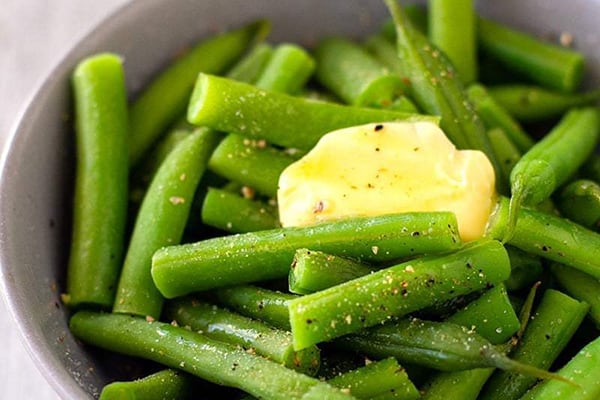
Green beans are the unripe, young fruit and protective pods of various cultivars of the common bean. Green beans are known by many common names, including French beans, string beans, snap beans, and snaps. Over 130 varieties of green beans are known.
Bush beans are short plants, growing to not more than 2 feet (61 cm) in height, often without requiring supports. They generally reach maturity and produce all of their fruit in a relatively short period of time, then cease to produce.
Pole beans have a climbing habit and produce a twisting vine, which must be supported by "poles" or trellises. Green bean pods contained a "string", a hard fibrous strand running the length of one side of the pod. This string was either removed before cooking.
Green beans are eaten around the world, and are sold fresh, canned, and frozen. They can be eaten raw or steamed, boiled, stir-fried, or baked. They are commonly cooked in other dishes such as soups, stews, and casseroles. A popular dish is green bean casserole.
Nutritionally, green beans are a healthy vegetable as a good source of fibre, potassium, and folate, and are an excellent source of protein, iron, and zinc. They contain antioxidants similar to those found in green tea, also known as catechins, which can improve heart health and help prevent cancer and manage/prevent diabetes.
Green Beans With Butter & Cracked Pepper
Instant Pot Green Bean Casserole
Potato Salad With Tangy Vinaigrette (Vegan, Gluten-Free)
Instant Pot Vegetables En Papillote
Braised Green Beans
Peppers
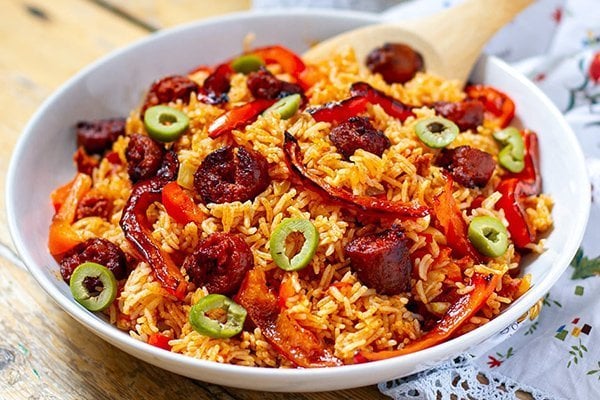
How hot do you like your food? In 1912, Wilbur Scoville developed what would become the Scoville scale, a measure of chile pepper “hotness.” The scale basically measures the amount of capsaicin, a chemical compound found in peppers that stimulates nerve endings, especially in the mucous membranes.
The chili pepper is probably indigenous to western South America and eventually made its way to Mexico. Columbus was likely responsible for bringing the pepper to Europe. The Spanish and the Portuguese then spread the fruit to areas like India and Southeast Asia in the early 16th century.
Peppers come in a very wide range of shapes, colors, sizes and heat intensity. The mildest, sweetest peppers are the fruit of the bell pepper plant, which is found in a rainbow of colors, ranging from green to red to purple-black.
Chile peppers can be tiny, like the diminutive (and colourfully named) mouse-dropping chile from Southeast Asia to the relatively large Cayenne pepper and also come in many colors, ranging from peach to bright red.
All peppers should have very glossy, firm skin with no brown or mushy spots on the surface of the fruit. Dried whole peppers, used frequently in Mexican cooking, should also have glossy skin and should be free of brown or moldy-looking spots.
You can store them in the refrigerator for up to a week. Make sure the pepper’s skin is totally dry before storing — moisture causes rapid deterioration. Many commercially grown peppers are coated in wax; this extends the storage life of the pepper (sometimes up to three weeks). You can also freeze them.
Peppers can be used raw in salads and as toppings for various dishes. They equally lovely roasted, stewed, pureed, stuffed and grilled. Peppers also pair well with their tomato, potato and eggplant cousins. Dried chiles, important in Mexican cuisine, have a depth of flavor very different from their fresh versions.
To diminish the intensity of chiles’ fiery burn in your dish, remove the ribs (aka the “placenta”) and the seeds of the pepper with a very sharp knife before cooking or eating raw. Wear gloves when working with hot peppers to avoid skin burns from the oils found in chiles. Be sure to wash cutting boards and knives that have come into contact with hot peppers with warm, soapy water to avoid a capsaicin-derived kitchen disaster.
The capsaicin in hot peppers is actually made up of a number of different chemical components, each with its own special way to burn. Some swear that consuming dairy (like a glass of milk) can diminish a chile’s burn; others recommend a spoonful of sugar or something sweet. Rice and ice water are still other common remedies. Whatever you do, do not down a carbonated beverage to relieve the pain — the bubbles enhance the burning.
In general, peppers are very high in Vitamins C and A and are good sources of folate, Vitamin B6, Vitamin E, and fiber. Sweet peppers are far more nutritious when ripe when allowed to turn from green to red, yellow or orange.
Colorful peppers are also high in lycopene, a powerful antioxidant that may help diminish the risk of certain cancers. The chemical compound capsaicin seems to increase the body’s metabolism, helping us store less fat and burn more energy.
There is some speculation that chiles cause a mild euphoria due to the endorphins released from the pain of the chile’s burn, which may be why chile-eaters come back for more.
Instant Pot Spanish Rice with Chorizo
Instant Pot Potato Soup With Poblano Peppers
Our Favourite Instant Pot Stuffed Peppers
Instant Pot Black-Eyed Peas (Southern Style)
Instant Pot Peppers And Onions Fajitas from Melanie Cooks
Award-Winning Instant Pot Chili Recipe from Oh Sweet Basil
Peas
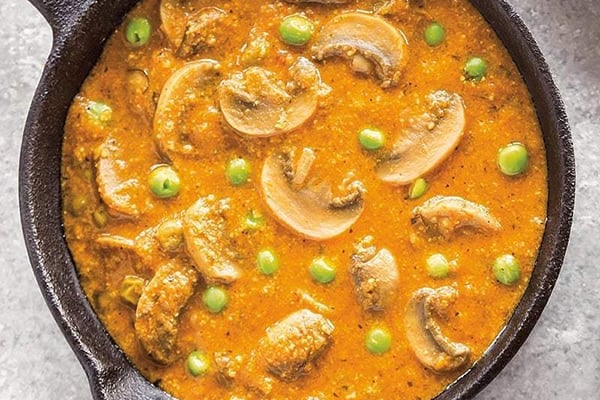
Peas are a type of legume native to the Middle East, specifically to the area around what is now Turkey and Iraq. From the Middle East, the legume spread rapidly to Europe. The pea was an important source of food for peasants in the Middle Ages, providing protein and other nutrients in lean times.
Snow peas and sugar snaps are often used in stir-fries, pairing with garlic, sesame oil, and soy sauce. Sugar snaps are also pretty excellent raw. Pea shoots and tendrils can be eaten like a green braised in a little bit of liquid, or sautéed, or tossed, raw, into salads.
Dried peas (split peas) tend to break down quite a bit when cooked so they are great for Split pea soup using a chunk of a ham hock with the peas while the soup cooks.
When shopping for garden peas, look for pods that are plump and bright green, with no wilted or brown spots. All parts of the pea plant are edible from the shoots, tendrils, and leaves, flowers, pods and, of course, the seeds (the peas themselves).
Fresh peas in the pod will keep for at least a week in the produce drawer of your refrigerator. They will get starchier and less sweet the longer you wait to cook them. Even after a longer period of time, when the pods look a little gnarly, the peas inside are usually okay.
Every variety of pea is really good for you. Garden peas are higher in calories than most other veggies and are rich in fibre and protein. They also have huge amounts of Vitamins C, A, K and folate, and are high in manganese, iron, zinc, and magnesium. They even contain a little bit of calcium.
Dried peas (aka split peas) have even more protein and fibre than fresh peas and contain more folate and potassium than fresh. Snow peas and sugar snaps have a large amount of Vitamin C — just one cup provides you with 128 per cent of your daily Vitamin C needs. They’re also super high in Vitamins A and K and are good sources of iron and Vitamin B6.
Peas were key to the creation of the modern science of genetics: Gregor Mendel, an Austro-Hungarian monk, conducted the very first experiments on the inheritance of traits in pea plants, which lead to the formation his theory of inheritance, which basically forms the basis of all of genetics.
Instant Pot Curry With Mushroom & Peas (Matar Mushroom)
Instant Pot Yellow Rice With Peas & Corn
Instant Pot Risotto With Pea & Celery (Quick & Easy)
Creamy Instant Pot Chicken & Noodles
Lemony English Peas and Asparagus from Recipes Instant Pot Official
Potatoes
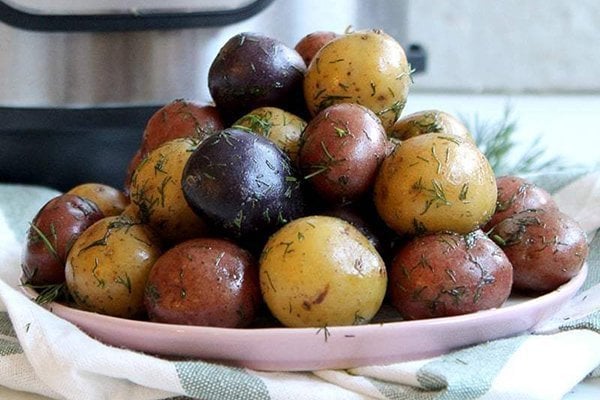
Is there anything better than hot french fries straight from the fryer and handed to you in a red cardboard container? Maybe not the healthiest choice, but definitely a guilty pleasure.
Potatoes originated in the highlands of Peru. Then the Spanish were the first Europeans to encounter them in the 16th century in Columbia, and later the British Isles and possibly to India. By the 17th century, potatoes were critical in the Irish diet. But in the 1840s, potato blight struck Ireland, and a devastating famine was triggered which killed about a million Irish, and a million more emigrated to the US and other countries.
Potatoes are generally classified by color, texture and sometimes by shape. Some examples: russets (aka “baking” potatoes) tend to have a “dry” texture, red potatoes tend to be waxy or creamy, white potatoes tend to be creamy, yukons (aka yellow potatoes) tend to be a bit waxy and rich, purple potatoes tend to have a “dry” or “floury” texture, and fingerlings are finger-shaped or oval.
Store potatoes in a cool, dark place with low humidity (a basement is ideal). Kept dry and in a dark place, most potatoes will keep for at least a month and up to three months or you can freeze cooked potatoes.
Potatoes are really one of the most versatile vegetables in the kitchen. They can be baked, steamed, fried, pureed, mashed, stuffed, roasted, grilled and boiled. Fried potato dishes include the ubiquitous French fry.
But there's also the classic American hash browns, Spanish patatas bravas, Swiss rösti (hash browns with an umlaut) and tater tots. Italians make potato gnocci, Indians stuff potatoes into samosas and paratha, the French make potato gratins and pommes dauphine.
The Irish mix cabbage into them or make potato pancakes. Germans make potato salad with bacon, onion, and vinegar; classic American potato salad has mayo and boiled eggs. Potato flour or mashed potatoes are also used in bread baking, donut making, and pastry dough, too.
Potatoes are actually pretty good for you. They are high in lots of vital nutrients, including Vitamin C, Vitamin B6, potassium, manganese and folate. Potatoes also have a fair amount of fiber, and even have good amounts of protein and iron.
Instant Pot Baby Potatoes With Dill & Butter
Instant Pot Chicken & Potatoes
Potato Salad With Tangy Vinaigrette (Vegan, Gluten-Free)
Instant Pot Scalloped Potatoes & Leeks
Instant Pot Chicken & Potatoes
Salt Potatoes With Herb Butter
Air Fryer Rosemary Potatoes
Zucchini & Other Squashes
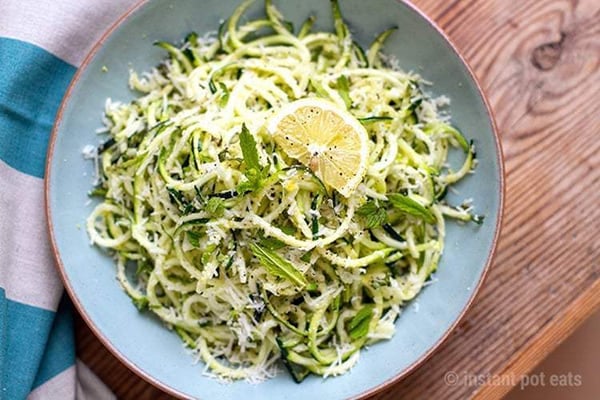
Zucchini is mild which means, it goes nicely with garlic, tomatoes, leafy herbs, olives, roasted peppers, onions, and various cheeses. Zucchini can be sautéed, batter-fried, stuffed, grated, grilled, pureed and roasted. Zucchini can go into sweet dishes, too for an added healthy appeal. Avoid the dull and bruised zucchini when purchasing.
The zucchini is part of the extensive Cucurbitaceae family, which includes cucumber, watermelon and winter squash. Before Christopher Columbus brought squash seeds to Europe. Once in Europe, the Italians coined the big-boned relatives as zucca and its more petite kin as zucchini.
Not until the 1920s did Italian immigrants bring back zucchini to America. One cup of raw zucchini is just 18 calories. A rich source of Vitamins B-2, B-6, and C, potassium (great for blood pressure), zucchini also offers decent amounts of fiber and even a little bit of protein.
Keep zucchini refrigerated until ready to use; wrap in paper instead of plastic, which creates moisture. Zucchini should be used within two or three days of purchase. Otherwise, zucchini gets mushy and moldy. Zucchini goes bad quickly.
To keep it around a little longer (about three months), cut it into ½-inch pieces, blanch, and freeze. You can also slice it into thin rounds and dehydrate zucchini, or pickle it.
10-Minute Zucchini Noodles With Garlic, Lemon & Parmesan
Best Instant Pot Zucchini Recipes
Instant Pot Zuppa Toscana (Tuscan Soup)
Broccoli Cheddar and Zucchini Soup from Half Baked Harvest
Instant Pot Red Lentil Zucchini Dal from Carve Your Craving
Instant Pot Zucchini Linguine
Creamy Zucchini Soup
Chocolate Zucchini Cake
Tomatoes
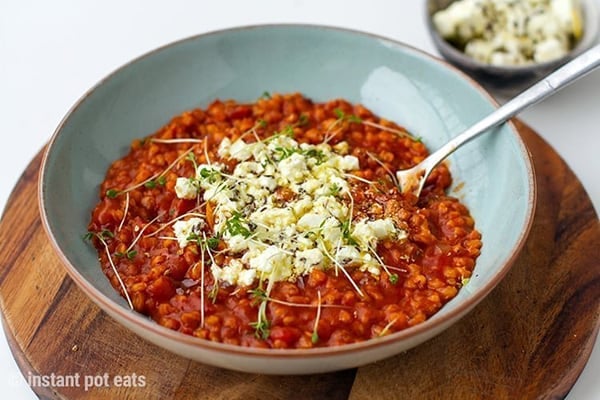
Is a tomato a vegetable? Botanically tomatoes are actually a fruit. The Aztecs grew them along with tomato relatives tomatillos and chile peppers. From Mexico, tomatoes spread to Spain in the 16th century.
Tomatoes weren’t accepted as good eating until the 17th and 18th centuries, with Spain and Italy leading the way for future tomato world domination. By the end of the 19th century, tomatoes were being canned in Italy and in the United States in vast quantities. Tomato ketchup, that most American of condiments, began to be produced commercially in the US by the 1830s.
Tomatoes come in a wide variety of shapes and colors, including purple, yellow, orange, and red. There are striped varieties of the fruit, as well as tomatoes that stay green even when ripe. For all tomato types, look for fruit that is unblemished and free from bruised or soft spots. The fruit should be firm to the touch when gently squeezed.
Keep your tomatoes on the counter instead of the refrigerator, with the exception of small cherry tomatoes. Tomatoes continue to ripen after being picked, so keep this in mind when selecting tomatoes at the market. If you are not going to use them for a couple of days, choose fruit that is on the firmer side and allow to ripen on the counter.
Tomatoes are extremely versatile in the kitchen and shine in many dishes, from sauces to salads to condiments. They are equally tasty raw and cooked and can be stuffed, sautéed, roasted, dried, pickled or fried.
Other classic culinary combinations include pairing tomatoes with onions, garlic, basil, oregano, and parsley. Tomato paste is a kitchen staple used in sauces, stews and other dishes. You can make sauce, paste or jam, then use a water bath canner to seal jars or freeze.
Tomatoes are low in calories, high in fiber and high in both Vitamins C and A. They are also good sources of Vitamin K, potassium, manganese, and lycopene. Tomatoes are also rich in flavonoids, antioxidants with anti-inflammatory and anti-bacterial properties.
Instant Pot Tomato Barley Risotto With Marinated Feta
Tomato Basil Sauce
Tomato Soup
Instant Pot Mexican Bean Salad
Instant Pot Spaghetti Sauce (with Fresh Tomatoes) from Detoxinista
Instant Pot Steamed Tomatoes from Recipe this
Easy Tomato Soup from A Saucy Kitchen
Melons & Mangos
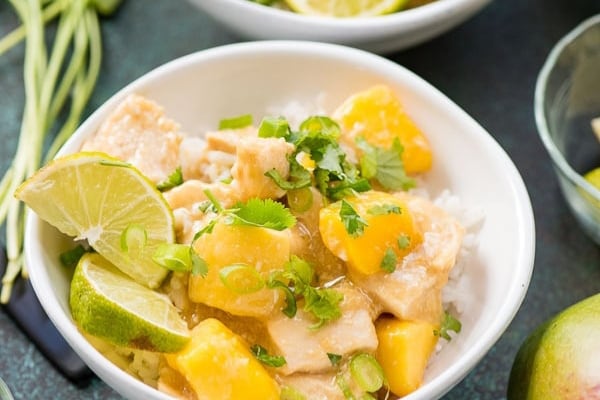
Mangos
The Portuguese brought the mango to Africa in the 16th century, and then on to Brazil in the 18th century, around the same time it arrived in Barbados, Jamaica and other parts of the West Indies. Finally in the late 1800s mangos made their way to Florida, Hawai and southern California.
The mango is a drupe – a fleshy fruit with a thin skin and a pit (which contains the seed) just like plums, cherries, and olives. They come in various shades of red, orange, yellow and green, and the color is no indicator of ripeness. Ranges in size from four ounces to two pounds, the mango also varies in shape, from big and bulbous to slender and kidney-esque.
When shopping, look for mangoes with leathery smooth skin, not leathery wrinkled skin. Black spots are okay, the result of sap leaking from the stem. Avoid a mango that smells sour rather than sweet or is squishy or moldy.
A ripe, ready-to-eat mango will yield to thumb pressure, and it should smell fragrant. Do not refrigerate mangoes! Keep them at room temperature. You can purée peeled mango and freeze for later for smoothies. They are also often dried.
It's a great source for Vitamin A, Vitamin C and a respectable source of fiber as well as potassium. The mango has been an important remedy in ayurvedic. The bark, gum, leaves, pit, and flower have been used to treat sundry ailments, from diarrhoea to rheumatism, asthma to scabies.
Instant Pot Mango Chicken from Boulder Locavore
How to Make Instant Pot Watermelon Rind Pickles from My Recipes
Instant Pot Mango Cheesecake (Gluten-Free Cheesecake) from Spice Cravings
Peaches & Other Stone Fruit

Last chance to use seasonal blueberries & berries (blackberries)! Fill up your pantry with berry jams and compotes, make some cakes and freeze for those easy after school snacks this fall. Just because the cold is coming doesnt' mean you have to say goodbye to summer berry treats.
Peach
From China, the peach travelled to Persia and then Greece, and into the rest of Europe, thanks to Alexander the Great. By the mid-1700s, Native Americans were planting peaches in the new colony of Georgia.
Peach flesh will be either yellow or white. Generally speaking, the white peach tends to be sweeter, while the yellow offers a slight tang and acidity. Whether or not you can pull a peach apart depends on whether it’s a freestone or a clingstone, the latter used for commercial canning.
When shopping, give your peach a smell. If you don’t catch a whiff of that signature perfume, a ready-to-eat peach should be fragrant. A good peach will also be tender and have some “give.” If a peach is a rock hard, it’s probably been picked too early and best left alone.
Since the peach is so fragile and perishable, it is critical to select fruit that truly is free of blemishes and bruises. Keep in mind that the peach not only bruises easily but can mold even if rubbing up against each other.
Peaches go great in summer salads; try arugula for a twist to a dinner salad. Also works well when grilled, especially if it’s a little on the firm side. This adds some smoky notes and carnalizes the natural sugars in the fruit. Try pairing grilled peaches with goat cheese or drizzled with honey.
Blueberries
Wild blueberries were first harvested commercially in the 1840s. In New Jersey in 1911, botanist Frederick Colville, with Elizabeth Coleman White, started experimenting with wild varieties of blueberries in order to create strains more suitable for cultivation. The commercial blueberry growing industry soon expanded to multiple US states and around the world.
Look for firm, dry, plump blueberries with smooth skin and no shrivelled or moldy bits. Some blueberries may have a faint white powdery coating (called “bloom”) that is naturally occurring and helps to protect the berries.
If you plan to use your blueberries within a day, store them right on the counter. Otherwise, stick them, unwashed, in the fridge in the container they came in. They will keep for up to a week. Discard damaged berries because they bring moisture and mold that can quickly ruin an entire container of the fruit.
Blueberry sauces pair deliciously well with savory dishes such as pork, duck. Toss a handful of berries into a green salad. Blueberries naturally work perfectly with sweet treats such as muffins, pies, cobblers, pancakes and crisps, blueberry sauce, jams, smoothies, and cookies. The easiest way to enjoy blueberries year-round is to freeze them.
Blueberries are one of the world’s healthiest fruits. Not only are they a good source of Vitamin K, Vitamin C, and manganese; they are also high in fiber and relatively low in calories. They are naturally rich in polyphenols, antioxidant chemicals that are increasingly linked to big-time health benefits, including in cardiovascular health, brain functioning (including memory) and even cancer prevention.
Peach Cheesecake
Blueberry Jam from Simply Happy Foodie
Blueberry Cheesecake from Crystal and Co.
Instant Pot Steel Cut Oats from Skinny Taste
Instant Pot Low-Carb Berry Cheesecake from Ditch the Carbs
Real Food Instant Pot Peach Crumble from Real Food Instant Pot Peach Crumble
How to Make Peach Jam in the Instant Pot Maria Moore Nutrition
Simple Instant Pot Plum Butter-THM E from The Healthy Milestone
Cherry Clafoutis Recipe from Two Sleevers
Pressure Cooker Cherry Compote from Pressure Cooking Today
For a full list of what's in season in June in the USA, check out this post: What’s In Season Around the Country: August
SAVE THIS POST TO PINTEREST
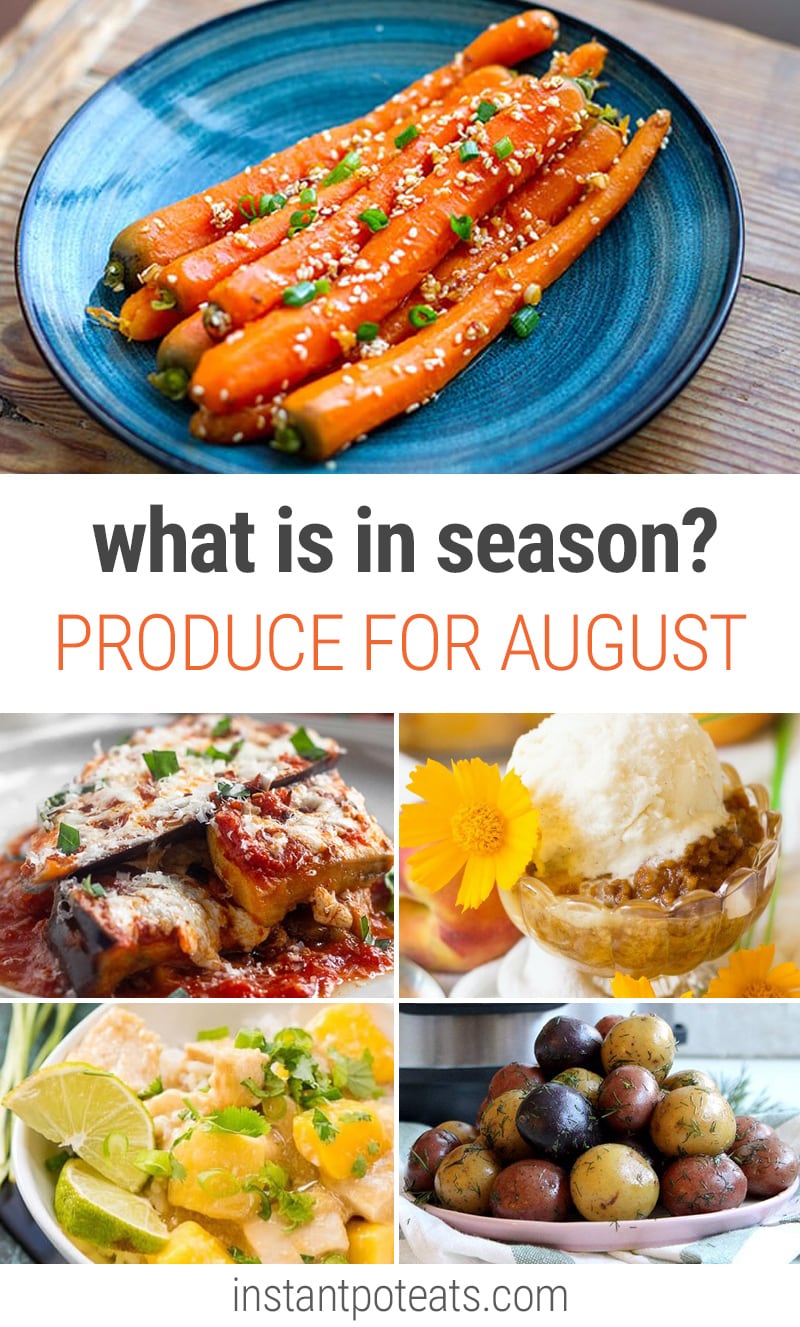


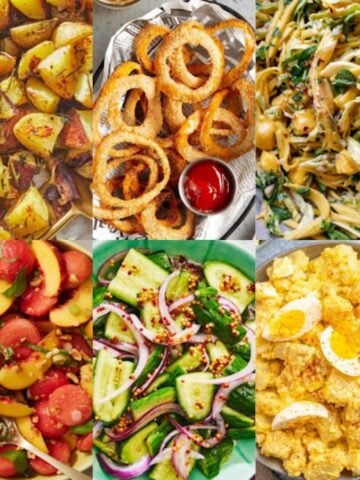
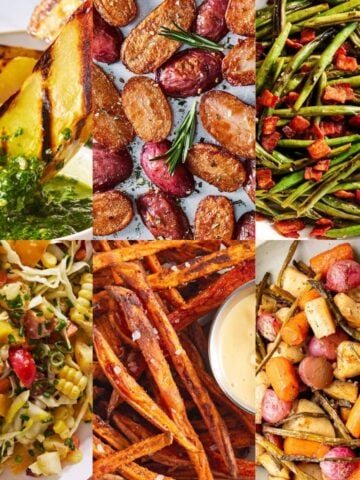
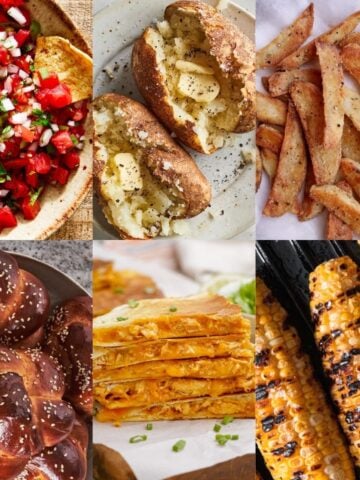
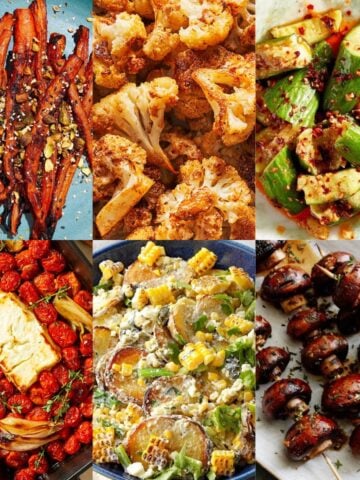
Barbara Schieving
So many great ideas!